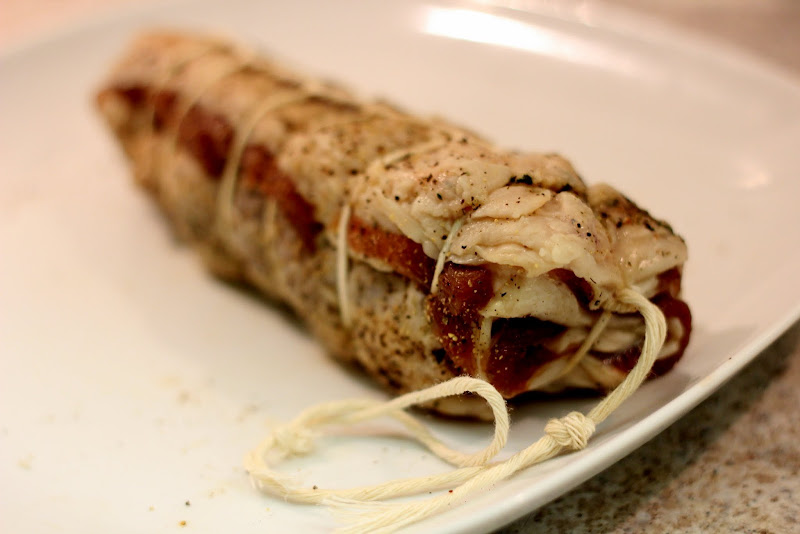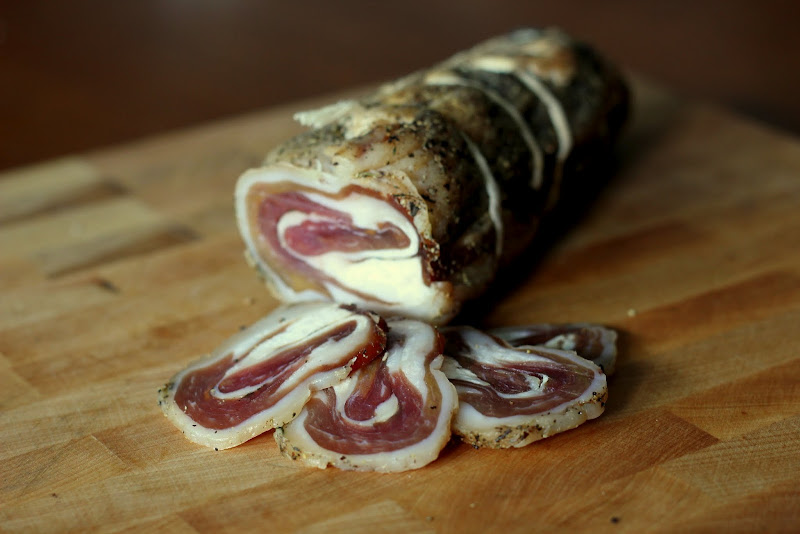This is a mixture of a traditional recipe, some background and a couple of personal comments. Since I know you are familiar with kilos and grams, I will not recalculate anything
You’ll need:
- A leg of lamb, some fat is nice. 4 to 6 kilos is fine. If it is fresh, it should not be older than five days. You can use frozen legs as well, thaw slowly.
- Lots of coarse sea salt. Let’s say 5 kgs. And a couple of 100 grams of fine seasalt.
- A plastic container with enough room for the leg and 5 kilos of salt.
That’s it. Now, the curing. I’m sure you have seen/read about/tried this method before, but none the less, let me explain. Basically you want to bury the leg in salt, there is no brine, no percentage of anything. Instead you dry cure the meat, and measure the weight loss in the meat itself. So-
- Jot down the weight of the leg. Subtract 30%. That is the finishing weight, and that will give you a leg that is on the soft side. I’d suggest that you go for that approach.
- First of all, cover the bottom of the container with a layer of sea salt. It should be so thick that the moisture from the leg never reaches the leg again. You can periodically drain out some of the moisture if you want to, if needed.
- Take the leg, and massage as much fluid as possible out of it. Start at the foot, working your way up. Wipe off moisture. You can do this several times during the first days.
- Give the leg a good rub with fine seasalt. Bury the leg in coarse seasalt. Cover it completely.
- Cure temperature, 4 degrees celcius. Count between 0,6 to one day of curing per kilo. I’d go for 0.75 days per kilo on the first try.
Example- your leg is 5 kilos. 0.75 days times 5 is about four days.
- Now a resting period before drying. Take it out of the salt, wipe it down. Store the leg between 14 days to one and a half month at a temp of 4 degrees C. Avoid a very moist environment to prevent mold. I’m sure I do not have to go into details here. I usually go for four weeks or more. More complex aftertaste.
- Drying temp is between 12 to 18 degrees C, humidity between 69 to 76 percent. This will take between 60 to 90 days. Check the weight, and I'd suggest that you go for for approx 30% on your first run.
Resting period and drying time can vary, if you rest for a long period, the drying period can be shorter than stated. This is a process that is rather uncritical. for several years I used no "resting period", and the difference is not that big. Go by feel, I know you have done stuff like this before.
By the way, the process described works with rheindeer as well, if you can get hold of some.
I find cured and dried leg of lamb delicious, but I can understand that it is not for everybody. I’ts much less “special” than let’s say moose heart, but I think you should be a fan of both cured meats as well as lamb to really enjoy it.
Here in Norway it is served together with other cured meats and sausages, scrambled eggs, cold potato salad, flatbread, lefse, beer and aquavite. Sort of Nordic tapas. Usually you can choose from different types of fish as well, but we not mix the meat and the fish on the same plate.
I have no intention to take over this thread, I only wanted to help. If you find this inappropriate, pleas say so, and I will remove the rather long text.


